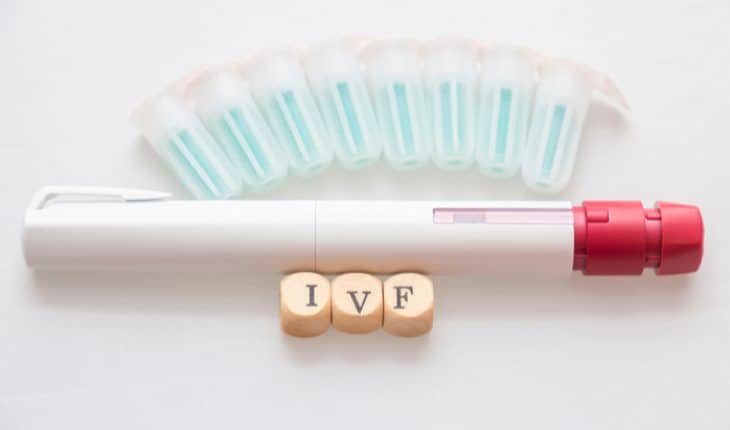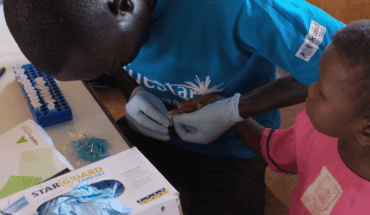‘IVF: 6 Million Babies Later’ is a major, new exhibition at London’s Science Museum exploring the remarkable story of the invention of in-vitro fertilization, (IVF), in the United Kingdom and the first “test-tube” baby, Louise Brown, born 40 years ago, on 25 July 1978. Since Louise’s ‘miraculous’ birth, more than eight million children have been born by IVF and related treatments thanks to the perseverance of the early pioneers and the latest research in reproductive science today. On display will be one of the old ‘Oldham Notebooks’ that record the scientific data collected by Purdy and Edwards between 1969 and 1978, as well as the equipment they used and notebooks will also be shown alongside press coverage from the period and personal correspondence and gifts received by Louise’s parents from the public.
The exhibition’s Curator, Connie Orbach, comments, “The birth of Louise Brown, on 25 July 1978, 40 years ago, was a defining moment in reproductive science and a testament to the dedication and drive of Edwards, Steptoe and Purdy. Through this exhibition we wanted to celebrate a technology that has impacted millions of people’s lives but also present the realities of IVF today and ongoing research in the field.
Through this exhibition we wanted to celebrate a technology that has impacted millions of people’s lives but also present the realities of IVF today and ongoing research in the field.
I would like to thank all the organisations and individuals who have contributed to our exhibition.” More than 500,000 babies a year are currently born from IVF and other fertility treatments.
Sally Cheshire CBE, Chair of the Human Fertilisation and Embryology Authority (HFEA) adds: “Louise Brown’s birth 40 years ago was a defining moment in fertility medicine thanks to the efforts of Patrick Steptoe, Bob Edwards and Jean Purdy, and today we can be proud that the UK fertility sector remains at the forefront of scientific and clinical progress in the field. As we continue to pioneer new techniques such as embryo testing to prevent serious mitochondrial disease and gene editing research to understand early human development and miscarriage, I truly believe the UK is the best place in the world for innovative treatments to be developed whilst maintaining overwhelming public trust. As 1 in 6 couples experience difficulty conceiving and undergo the emotional rollercoaster of fertility treatment, the HFEA will continue to prioritise high quality patient care and emotional support for all patients as they seek to have the families they long for.”
The development of IVF, culminating in the ‘miraculous’ birth of Louise Brown was a defining moment for reproductive technology pioneered by British researchers. This exhibition will explore the ten years of experimentation, hundreds of failed attempts and many setbacks faced by Robert Edwards, Patrick Steptoe and Jean Purdy, who is sometimes called the ‘forgotten IVF pioneer’, in their determined quest to treat infertility and achieve the first successful IVF birth.
Visitors will be able to see one of the ‘Oldham Notebooks’, as they are known, that record the scientific data collected by Purdy and Edwards between 1969 and 1978, as well as examples of the equipment they used. Over 10 years, the notebooks record data for 282 anonymous women, 457 attempted egg retrievals, 331 attempted fertilisations and approximately 221 embryos, but only record five pregnancies and two successful births.
The rest of the exhibition shows the worldwide media attention Louise’s birth brought to her family and what the future holds for scientific On display will be press coverage from this period, illustrating the ethical debates about IVF, and, in contrast, examples of the overwhelmingly positive world-wide media and public attention that Louise Brown’s birth attracted. The exhibition will include the glass desiccator used by Edwards to incubate embryos and some of the personal correspondence and gifts received by Louise’s parents from the public around the world.
IVF is now a billion-pound, global industry that has enabled the birth of more than 6 million children worldwide. The exhibition will explain IVF science and explore the many reasons people undertake assisted reproduction and the huge commitment involved. Visitors will see the equipment used in an IVF lab today, as well as new ‘shoebox’ or SCS incubator equipment that has been trialed around the world and is designed to dramatically reduce the cost and improve the accessibility of IVF.
Visitors will see the equipment used in an IVF lab today, as well as new ‘shoebox’ or SCS incubator equipment that has been trialed around the world and is designed to dramatically reduce the cost and improve the accessibility of IVF.
Aileen Feeney, chief executive of Fertility Network UK, explains “Despite 40 years of this life-changing technology, IVF’s average success rate is still only 25%. It is important to remember the couples for whom IVF did not work and all those who have been denied access to fertility treatment because they live in an area where medical help has been cut or removed. What Fertility Network UK would like to see now is access to IVF based on medical need, more support for the 1 in 6 couples with fertility problems and recognition that infertility has a massive and often life-long impact on mental health.”
The 40th birthday of IVF and Louise Mullinder (nee Brown) will be celebrated at a special Science Museum Lates on Wednesday 25 July 2018 at 7pm. Free tickets are available now for a unique in-conversation event in the Science Museum IMAX Theatre with Louise Brown and Roger Gosden, a former doctoral student of IVF pioneer Robert Edwards who dedicated his career to researching female infertility.
IVF: 6 Million Babies Later will be free to visit and open daily from 5 July 2018 until November 2018.
Science Museum, Exhibition Rd, Kensington, London SW7 2DD
- Dream Worlds a new exhibition in Cambridge - 14th December 2024
- “All Our Stories” a major new exhibition - 26th September 2024
- Dance yourself well - 23rd June 2024






